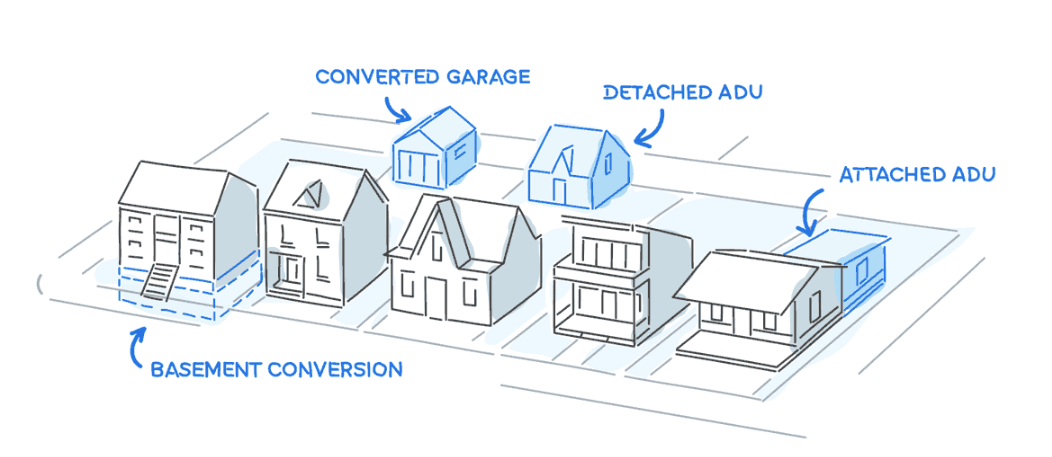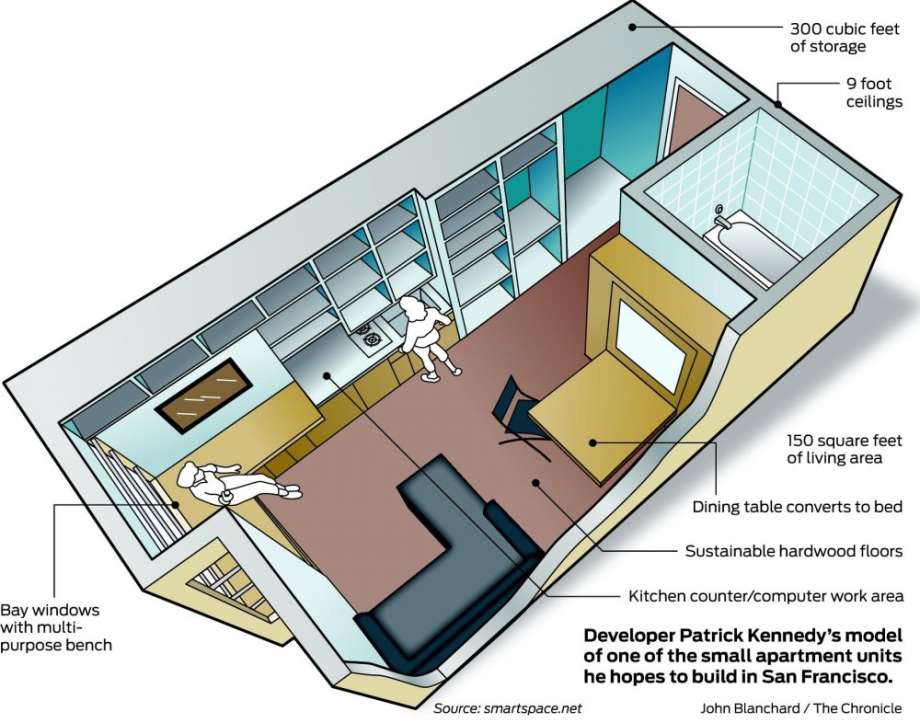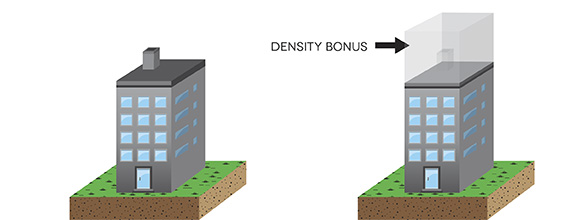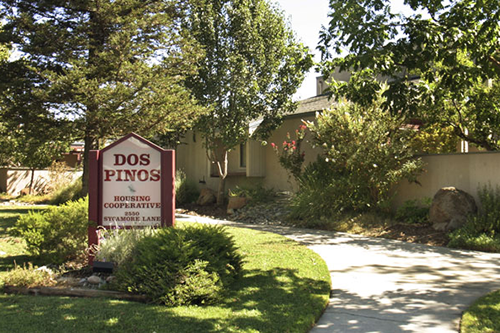3.5 Building Utilization
Building Utilization refers to the amount of building space used per person throughout their daily activities. Specific types of building energy uses like heating and cooling are proportional to space use, and strategies to reduce the amount of space required per person, whether at home or at work, that do not sacrifice comfort can be effective ways to reduce emissions. However, the more profound impact of space efficiency is the densification of all urban activities, which may have an even greater emissions impact by reducing travel distances, as well as many potential social co-benefits.
3.5.1 Revise zoning codes in medium to large cities to facilitate upzoning

Illustration of missing middle housing achievable through upzoning. Source: Missing Middle Housing
| Location | Oregon |
|---|---|
| Details | HB 2001 legalizes the development of duplexes on residential land currently zoned for single-family housing in all communities of 10,000 or more. It also allows for the construction of three- to four-unit homes on single family-zoned land in cities of 25,000 or more. |
| Links | Oregon Legislative Assembly |
| Implementation Costs & Impact Factor | Besides legislative work, No implementation costs. Fiscally, 50% of Oregon households are rent burdened while 23% of renter households are extremely low income. These individuals will likely see the biggest impact. However, the law applies to cities of over 10,000. As of the 2010 Census, 2,208,732 Oregonians, which constitute 57.65% of the state’s population, live in such communities. |
| Scalable Potential | According to tax assessor records, over 65,000 parcels have detached single-family residences. It is not yet clear what the impact of upzoning change is on actual development in other cities over multiple years, but these parcels could be potential candidates for suburban infill development. |
| Similar | Minneapolis 2040 California SB50 (did not pass) |
3.5.2 Eliminate minimum parking

Illustration of the impact of parking minimums on building design. Source: Strong Towns
| Location | Buffalo, NY |
|---|---|
| Details | Developers are no longer required to build a certain number of parking spaces for commercial or residential projects, regardless of whether or not there are mass transit options nearby or if the tenants even need them. |
| Links | Buffalo Green Code Land Use Plan |
| Implementation Costs & Impact Factor | Besides legislative work, no implementation costs. 28% of land area in Buffalo’s city center is devoted to parking but only 63% of parking spaces are occupied on an average weekday. |
| Scalable Potential | According to Stockton’s zoning ordinance, large shopping centers must build 1 parking space per 250 square feet of retail space. Anecdotal evidence suggests that this is too much space, even during peak hours. Similarly inefficient standards include that colleges and universities must have 1 parking space per classroom plus 0.75 spaces per student. |
| Similar | Minneapolis 2040 San Francisco, CA Hartford, CT |
3.5.3 Encourage accessory dwelling units

Different types of ADUs. Source: Housable
| Location | California |
|---|---|
| Details | The 2019 California state legislative cycle passed progressive accessory dwelling unit (ADU) laws that, among other changes, supercede local to allow ADUs to be built on every single family parcel. Counties and cities in the Bay Area are in the process of updating their local ADU ordinances as well as offering many proactive resources to encourage ADU development and streamline the permitting process. |
| Links | San Mateo County, CA Napa and Sonoma County, CA San Jose, CA |
| Implementation Costs & Impact Factor | Besides legislative work, no implementation costs. Aggregating single unit detached and attached, California has over 8,400,000 units. |
| Scalable Potential | See Chapter 4. |
| Similar | Seattle, WA |
3.5.4 Encourage micro-units

Schematic of a microunit in SF. Source: SF Gate
| Location | San Francisco, CA |
|---|---|
| Details | In 2011, SFHAC worked with District 8 Supervisor Scott Wiener to pass legislation that allows for the construction of micro-units, also known as “efficiency dwelling units.” The legislation allows for units as small as 220 square feet comprised of 150 square feet of living space, plus a bathroom and kitchen. |
| Links | San Francisco Planning |
| Implementation Costs & Impact Factor | Besides legislative work, no implementation costs. Assuming this will be in San Francisco and one will pay 30% of their income on the unit at the suggested price of $1,400, this could impact 69.5% of San Francisco households. |
| Scalable Potential | Assuming the same development costs and that one will pay 30% of their income on the unit, then this could impact 48.68% of Stockton households. Assuming the same development costs and that one will not save 20% of their income (as recommended) but instead spends it on housing e.g. 50% of their income goes towards housing, then this could impact 62.3% of Stockton households. |
| Similar | ShareNYC Vancouver, Canada |
3.5.5 Provide a density bonus for affordable housing

Illustration of a density bonus. Source: City of North Vancouver
| Location | San Francisco, CA |
|---|---|
| Details | The 100% Affordable Housing Bonus Program, passed in 2016, provides a 30-foot height bonus for housing developments that completely consist of affordable housing for low- or very low-income households. |
| Links | HOME-SF |
| Implementation Costs & Impact Factor | Besides legislative work, no implementation costs. A poorly designed program can disincentivize development overall. Technically affordable housing is for those with the median income or below. For San Francisco, this would then apply to over 440,000 individuals. |
| Scalable Potential | There are currently over 150,000 individuals living below the median income in Stockton. |
| Similar | Arlington, VA Affordable Housing Density Bonus Program (Section H-7) |
3.5.7 Match homeowners with vacant spaces with individuals looking for affordable housing

Source: HIP Housing
| Location | San Mateo County, CA |
|---|---|
| Details | The San Mateo Home Sharing Program is funded by the Department of Housing. The program matches providers with seekers and must live in San Mateo County. They accept housing vouchers through the program. Most rents range from $600 to $1500. Some individuals participating in the program also participate in household chores as a way to pay their rent. |
| Links | HIP Housing |
| Implementation Costs & Impact Factor | The program is run by nonprofit HIP Housing. The average length of stay is 3 years. Since the program’s inception in 1979, 65,000 individuals have participated. |
| Scalable Potential | A similar nonprofit could organize in Stockton. |
| Similar | Santa Clara County Housing Sharing Program, operated by Catholic Charities |

